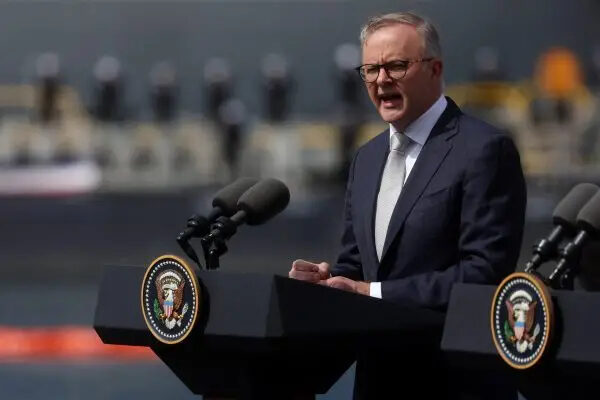Australia’s grand strategy

The term ‘grand strategy’ may perplex, but many employ the technique even if not naming it such. Most governments seek to build and then apply national power in their attempts to establish sought-after relationships with other states.
Grand strategies are whole-of-government, involving diplomatic, informational, military and economic power. They are of most use to states with limited power that need to focus scarce resources on their most important concerns.
The grand strategy methodology is a useful framework with which to consider Australia and its contemporary international policies and activities as a middle power. Like other small and middle powers, grand strategy informs Australia’s statecraft, the application of diverse forms of national power. Grand strategy also involves building particular forms of national power in a manner appropriate to achieving the desired objectives.
Australia has developed a balance of power grand strategy that will be of a scale ‘sufficient…to deter aggression and coercion’ and generate ‘a strategic equilibrium’. Such a grand strategy assumes that others can be stopped from achieving their ambitions by being as, or more, powerful than them.
Power is gained by building up military and economic power, by forming collective defence alliances with others, or by doing both. This grand strategy is clearly focused at the great power level and implicitly at China.
The balance of power grand strategy is steadily being implemented. Diplomatically, AUKUS is strengthening the US alliance and UK partnership. Internally, Canberra is hardening societal resilience by criminalising foreign interference, blocking specific foreign telecom firms, toughening foreign investment laws, strengthening critical infrastructure regulations and countering misinformation and disinformation actions.
In addition to the AUKUS submarines, Australia is buying new long-range strike missiles, getting anti-ship missiles for the army, upgrading northern defence bases and developing offensive cyber capabilities. Building economic power actions includes the National Reconstruction Fund which provides targeted investments in defence capability, advanced manufacturing and critical technologies.
Looking beyond the great powers, Australia has also devised an engagement strategy focused on middle and smaller powers. This grand strategy involves working with others to achieve common goals. Australia will work with Southeast Asia and the Pacific ‘to enhance our collective security and prosperity’. Supporting regional states to be more resilient to outside pressures aligns with a balance-of-power grand strategy.
In recent years Australia reached numerous bilateral and multilateral economic agreements with Indonesia, the Pacific Islands, India, Japan and South Korea. Australia also aims for greater trade and investment with the Association of Southeast Asian Nations (ASEAN) and the two sides have deepened ties with the Comprehensive Strategic Partnership and its associated Aus4ASEAN Futures Initiative.
The initiative includes financing smart cities, digitisation, technology innovation, digital skills training and a scholarship program in the areas of maritime, connectivity, economic development and sustainable development goals.
The two grand strategies are ‘mutually reinforcing’. Having different strategies to achieve different outcomes is necessary as a single grand strategy cannot achieve all a state seeks and combining them has proven problematic.
The balance of power grand strategy will not solve the problem of a possible great power war. Instead, the strategic equilibrium must be maintained indefinitely until the risk of major war fades. Australia has little control over what the great powers do, meaning its grand strategy must maintain a high level of defence expenditure and industry as well as a focus on major high-technology wars.
Australia is effectively trapping itself within a narrow range of possible domestic and foreign policy options. On the other hand, a great power war in the region is critically important to avoid. Reduced autonomy in the international system may be a price worth paying.
The engagement grand strategy brings its own complications. Australia’s new trade and investment strategy with Southeast Asia needs a whole-of-nation effort. It calls for better Southeast Asia literacy across Australia’s business, government, education and community sectors, proposing sectoral business missions to the region, more capable business chambers, deeper SME links with the region, more professional exchanges and internships, and for Australia to be a substantial regional investor using monies from its corporations, capital markets, national savings and superannuation funds.
Ultimately, grand strategies must generally gain domestic approval to be successfully implemented. It’s not simply a national government endeavour. Instead Canberra needs to persuade Australians of the merits of the two grand strategies by building legitimacy and crafting a strategic narrative that encourages buy-in.
A strategic narrative can provide an interpretive structure to make sense of these challenges and emerging issues. Such narratives should appeal to both people’s rational and emotional cognition.
The two grand strategies set out a path, even if their success is uncertain. More definite, is that over time they will impact all Australians.
This article was published by the East Asia Forum.
Dr Peter Layton is a visiting fellow at the Griffith Asia Institute, Griffith University. He has extensive defence experience including teaching grand strategy at the Eisenhower College, US National Defence University. His latest book is ‘Grand Strategy’.













